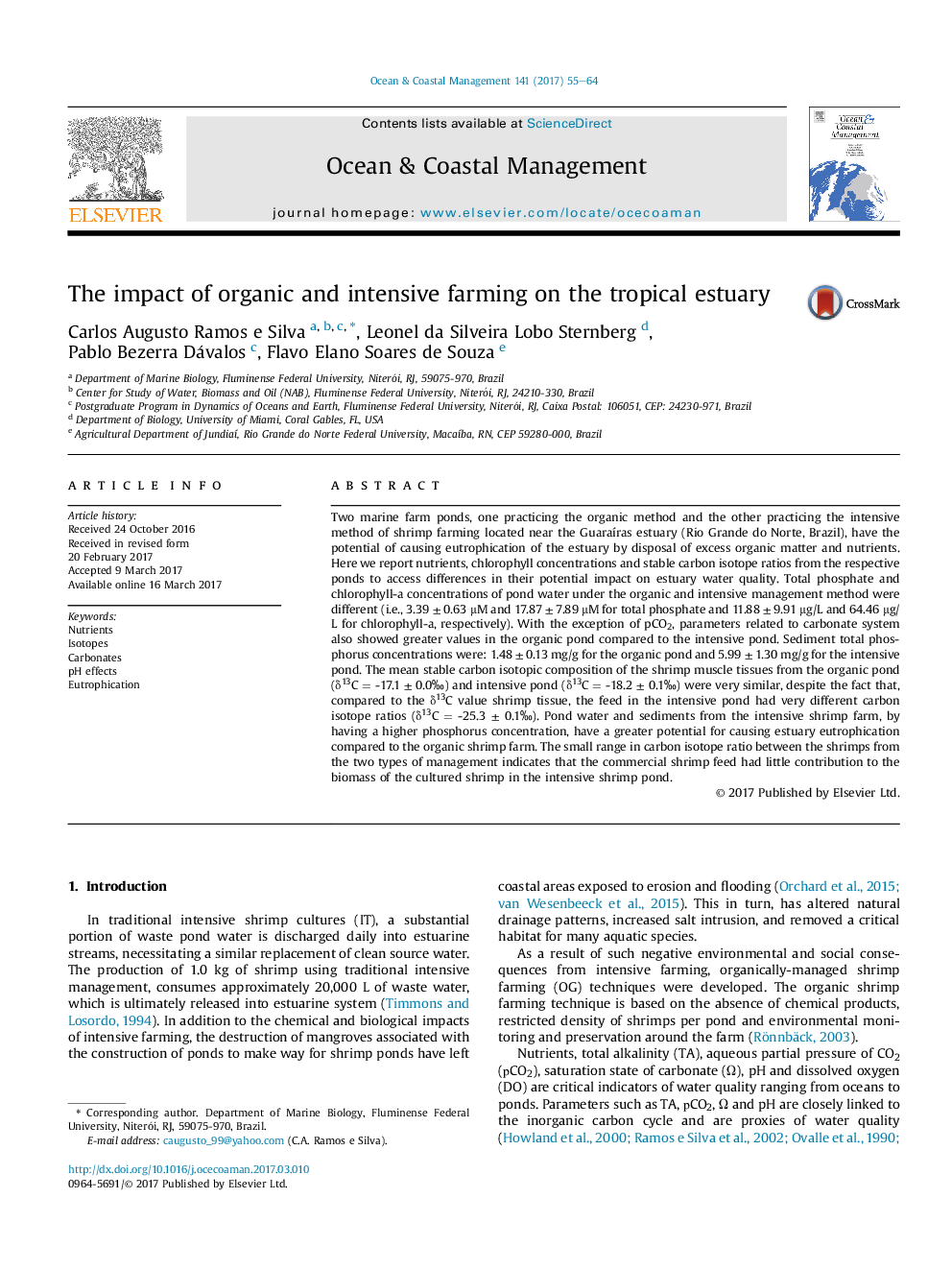| کد مقاله | کد نشریه | سال انتشار | مقاله انگلیسی | نسخه تمام متن |
|---|---|---|---|---|
| 5473944 | 1520488 | 2017 | 10 صفحه PDF | دانلود رایگان |
- Pellet feed has little contribution to the shrimp biomass.
- Pellet feed is an important source of phosphorus.
- Shrimp farms are capable of sequestering CO2 from the estuary.
- Intensive management should be replaced by the organic management practices.
Two marine farm ponds, one practicing the organic method and the other practicing the intensive method of shrimp farming located near the GuaraÃras estuary (Rio Grande do Norte, Brazil), have the potential of causing eutrophication of the estuary by disposal of excess organic matter and nutrients. Here we report nutrients, chlorophyll concentrations and stable carbon isotope ratios from the respective ponds to access differences in their potential impact on estuary water quality. Total phosphate and chlorophyll-a concentrations of pond water under the organic and intensive management method were different (i.e., 3.39 ± 0.63 μM and 17.87 ± 7.89 μM for total phosphate and 11.88 ± 9.91 μg/L and 64.46 μg/L for chlorophyll-a, respectively). With the exception of pCO2, parameters related to carbonate system also showed greater values in the organic pond compared to the intensive pond. Sediment total phosphorus concentrations were: 1.48 ± 0.13 mg/g for the organic pond and 5.99 ± 1.30 mg/g for the intensive pond. The mean stable carbon isotopic composition of the shrimp muscle tissues from the organic pond (δ13C = -17.1 ± 0.0â°) and intensive pond (δ13C = -18.2 ± 0.1â°) were very similar, despite the fact that, compared to the δ13C value shrimp tissue, the feed in the intensive pond had very different carbon isotope ratios (δ13C = -25.3 ± 0.1â°). Pond water and sediments from the intensive shrimp farm, by having a higher phosphorus concentration, have a greater potential for causing estuary eutrophication compared to the organic shrimp farm. The small range in carbon isotope ratio between the shrimps from the two types of management indicates that the commercial shrimp feed had little contribution to the biomass of the cultured shrimp in the intensive shrimp pond.
Journal: Ocean & Coastal Management - Volume 141, 1 June 2017, Pages 55-64
